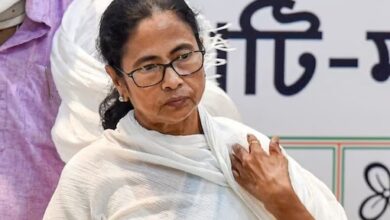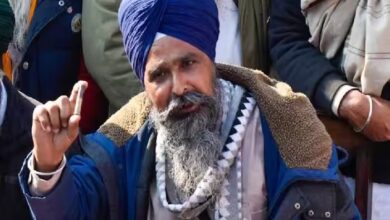Kerala: Stories of a “buried” past are still echoed by “Kallara Pally.”
In the center of Thiruvananthapuram city, 248 European colonial-era graves are located on a 2.45-acre church area. More than six British troops who were part of the Nair army of the former Travancore kingdom are buried here.

Notable Hindus who are buried at the cemetery include educationist Gauri Sankunni and Swami John Dharma Theerthar, who was a close companion of Sree Narayana Guru.
The maharaja gave the British land for the cemetery in 1814 so they could bury their troops there. First built as a modest chapel in 1859, the CSI Christ Church eventually expanded. With its main office located in Kottayam, the Madhya Kerala diocese’s Christ Church was constructed in the Gothic Vastu style and now has more than 1,200 parishioners.
Professor Thomas Biju Mathew displays a European person’s mausoleum-like grave.
The chapel, now called “kallara pally,” is surrounded by more than 1,000 tombs dispersed throughout a lush plot shaded by hundreds of trees, some of which are 200 years old.
For the European officers and their families, a separate burial registry was kept. The fascinating paper sheds light on the many causes of their demise, which included lung infections, teething, influenza, and even cancer. Major Rober Sherriff was a commander in the Nair brigade who passed away in 1850 at the age of 44. It was none other than Marthanda Varma who built his mausoleum-style grave. The other brigade soldiers buried here are 32-year-old Lt. J E Falkhney and Commander Thomas Cranford Esq.
Charles Edward Robert, the 28-year-old headmaster of Marthanda Varma’s free school, is another well-known Briton buried here.
Among the Malayalis buried here is K I Simon. He was a physician to the Travancore monarch and was born in Ayroor, close to Kollam. He passed away at the early age of 24.
According to M J Kuruvilla, one of the two church wardens, Lt Henry Dixon, who likewise passed very young—at the age of 28—is buried in the oldest tomb, which was built in 1814. In addition to common burials, the cemetery has a large number of magnificent tombs.
The stained-glass object that was brought from Italy in 1920 and placed behind the altar
Biblical passages and literary flourishes may be found in several of the epitaphs. Kuruvilla, who resigned as Nabard’s deputy general manager, continues, “Some of the sepulchres built in the original European style, with domes and arches, add to the architectural splendour of the graveyard.”
There is another Indian registry that has information on around 1,400 funerals that occurred after 1866. Korah Abraham, the second warden, remembers that in the past, remains were transported on a wooden hearse pulled by horses that was gifted in the 1800s by the maharaja of Travancore.
The family of former parishioner Andrew Jacob Greenfield “subsequently placed the hearse in a glass chamber,” according to Korah.
When Christ Church admitted Hindus, it also accepted the dead remains of Charles Mead, a British missionary who had been stationed in nearby Neyyoor, Nagercoil, at the time. Mead had caused a stir when he wed a Hindu widow. He was a parishian at the neighboring Mateer Memorial CSI Church at LMS Junction, which is a part of the South Kerala Diocese.
There there existed a military monument on the grounds, built south of Christ Church. The church was separated from it by a subsequent addition of a road.
Trees with QR codes
The many coded digital name boards identify the various trees that spread like a canopy, such as the blue jacaranda, mahogany, frangipani, oriental persimmon, queens flower tree, rain tree, copper pod tree, and many more. A brainchild of Prof. Thomas Biju Mathew, the church’s ecological forum chairman, each board has a QR code that links to the scientific information about each tree.







